#urban agriculture
Explore tagged Tumblr posts
Text
As urban populations boom, urban agriculture is increasingly looked to as a local food source and a way to help combat inequitable food access. But little is known about how productive urban agriculture is compared to conventional, rural farming. A new study digs in, finding urban gardeners and hydroponics can meet and sometimes exceed the yields of rural farms. “Despite its growing popularity, there’s still quite a lot we don’t know about urban agriculture, like whether the yields are similar to conventional agriculture, or even what crops are commonly grown,” says Florian Payen, an environmental scientist at Lancaster University and lead author of the study, published today in AGU’s journal Earth’s Future. The new study compiles studies on urban agriculture from 53 countries to find out which crops grow well in cities, what growing methods are most effective, and what spaces can be utilized for growing. The researchers find that urban yields for some crops, like cucumbers, tubers and lettuces, are two to four times higher than conventional farming. Many other urban crops studied are produced at similar or higher rates than in rural settings. Cost efficiency remains an open but important question. Most studies on urban agriculture have focused on green spaces, such as private and community gardens, parks and field growing operations. Payen’s work includes “gray” spaces — places in cities that are already built but could be used for growing, such as rooftops and building facades. In both green and gray spaces, the study examines a suite of crops grown in soils versus hydroponics, horizontal versus vertical farming, and natural versus controlled conditions. “Surprisingly, there were few differences between overall yields in indoor spaces and outdoor green spaces, but there were clear differences in the suitability of crop types to different gray spaces,” Payen says. Certain crops like lettuces, kale and broccoli are more naturally suited to be grown vertically in indoor spaces than others. “You can’t exactly stack up apple trees in a five- or ten-layer high growth chamber,” he says, “though we did find one study that managed to grow wheat stacked up like that.” Other crops, like watery vegetables (e.g., tomatoes) and leafy greens, performed well in hydroponic environments. And crops grown in fully controlled environments can be grown throughout the year, allowing harvests to happen more times per year than in open-air environments, which leads to higher annual yields. But scientists will need to keep studying these systems to plan cost-effective agriculture solutions. The finding that urban agriculture can have similar or greater yields to conventional agriculture “is exactly what we have been waiting for in the urban agriculture research community,” says Erica Dorr, an environmental scientist at AgroParisTech who was not involved in the study.
849 notes
·
View notes
Text








Detroit Become Human (2018)
#detroit become human#cyberpunk#video games#cyberpunk aesthetic#gaming#scifi games#artificial intelligence#androids#interactive story#scifi aesthetic#gifs#gifset#dbh#dbh connor#blade runner#rooftop#farming#urban landscape#urban farming#urban agriculture
89 notes
·
View notes
Text
Underground greenhouses are helping people to take back control of their nutrition and ease farming amid the climate crisis
#solarpunk#solar punk#indigenous knowledge#DIY#greenhouse#gardening#food security#urban agriculture#walipini
78 notes
·
View notes
Text

Europe’s largest rooftop farm, Nature Urbaine in Paris, can produce 10 tons of produce each season.
Hundreds of immaculate white columns dotted with small cylindrical outlets cover the rooftop of the Paris Expo Porte de Versailles exhibition center in the south of the French capital.
Fragrant basil, scarlet strawberries and unwieldy masses of dark green kale are among the colorful produce sprouting from each of the holes, which form part of a soil-less farming device known as an aeroponic growing tower.
“You see, there’s nothing in there,” says Eugénie Mercier, pulling out a bunch of kale to reveal its roots dangling freely inside the plastic structure. “When we water them, the plants take what is needed and we recycle the leftover water, so none is wasted.”

Mercier is manager of Nature Urbaine, Europe’s largest urban rooftop farm, which opened in spring 2020. At 14,000 square meters (150,000 square feet), its surface is almost as large as the playing area of the Stade de France football pitch not far away, and it can produce more than 10 tons of fruit and vegetables per season, using neither pesticides nor soil. According to manufacturer Agripolis, its computer-controlled hydroponic and aeroponic systems use 80% less water and produce 62% fewer CO2 emissions than a conventional farm for the same yield. Last year it was recognized by Ecocert, a French certification organization, as the first urban farm in the world to net offset carbon.
“It’s not just greenwashing,” adds Mercier. “This will really benefit the planet.”
Source link will ask you if you're a robot. Say no, I eat green veg
#solarpunk#solarpunk business#solarpunk business models#solar punk#farmers#solar power#urban farms#paris#france#rooftop farming#urban agriculture#food security
12 notes
·
View notes
Text
I was tagged by @tinydooms to "list five topics you can talk on for an hour without preparing any material, then tag five people".
In no particular order:
Golden Age Hollywood stars: notably Tallulah Bankhead, my number one scandalous bisexual and all her naughty misadventures.
Knitting: let's get boggled down in techniques and natural fibers.
Growing your own food, especially in urban gardering: I'll tell you all about the why's, how to's and best tricks, before going into prep and conservation.
Queer theoretical perspectives on the Bible: moving beyond Juda and Tamar, and Leviticus 18:22, into the love story of Ruth and Naomi
Tarzan (obviously): Shall we do a side by side comparison of the first 20 novels, or go in depth about Tarzan alive, the definite biography of Lord Greystoke? Bonus topic: The adorable idiots the Tenningtons.
If you're up for it, no pressure tags @accidentallylita , @laurelindebear , @iknowthislooksbad , @the-end-society , @hxans
#ask and answer#ask game#asks#personal#general nerdiness#old hollywood#golden age of hollywood#knitting#urban agriculture#queer theology#queer theory#tarzan
6 notes
·
View notes
Text
Urban agriculture refers to the cultivation, processing, and distribution of food within cities and densely populated areas. This practice transforms unused spaces such as rooftops, vacant lots, and balconies into productive areas for growing vegetables, fruits, and herbs. Urban farming not only increases local food security but also promotes sustainable practices by reducing the need for long-distance transportation of produce. It can involve small-scale gardening, community farms, or even hydroponic systems inside buildings. Urban agriculture provides fresh produce, reduces carbon footprints, and fosters community engagement. Additionally, it contributes to green spaces in cities, enhancing biodiversity and improving air quality. This movement supports local economies by creating jobs and educational opportunities in food production and sustainability
https://youtu.be/7vrWLOBDiuU?si=sGyCSargrxcbgJjS
2 notes
·
View notes
Text
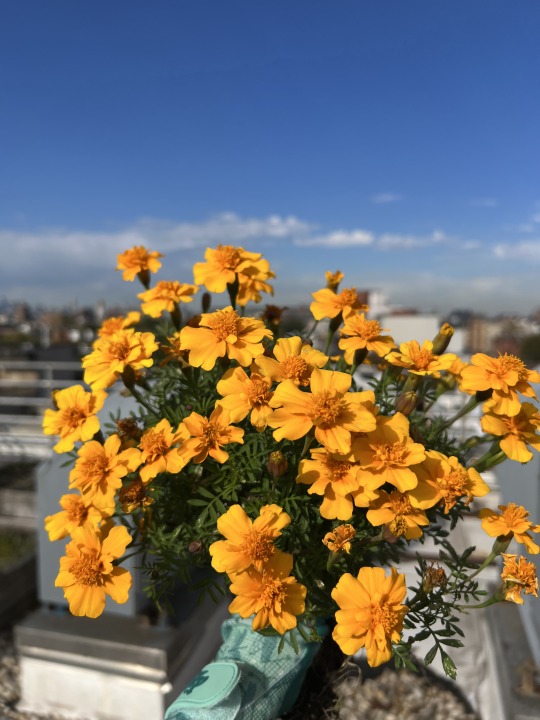
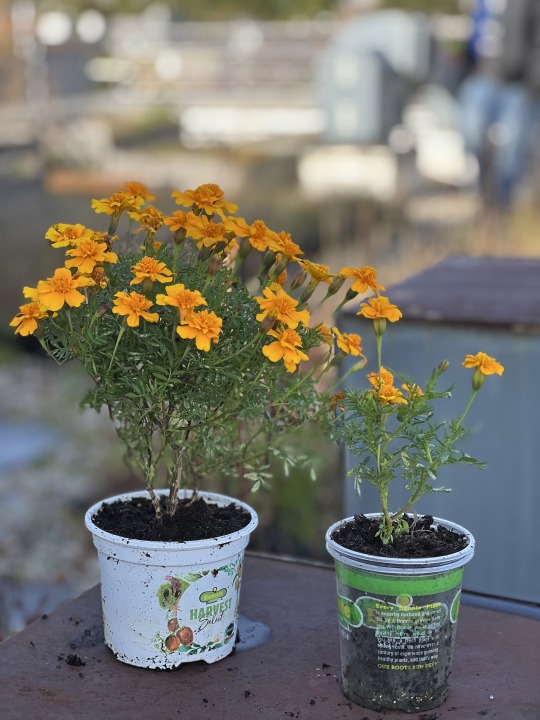

🌸🌿 Gardening Delights in Supportive Housing! 🌼🌱
Hey there, lovely community! 🌸
What We've Been Up To: Our gardening enthusiasts, along with our amazing clients, have been busy! Regular weeding sessions have kept our garden pristine and healthy. But that's not all – we've introduced charming flower pots that have added a burst of colors to our surroundings. 🌺🌼 The result? A picturesque view that not only delights our clients but also serves as a delightful decoration for our office space! 🌿✨
Why Gardening Matters: Gardening is more than just planting flowers and weeding the soil; it's about nurturing life, fostering connections, and finding peace in the midst of nature. Our gardening sessions provide a therapeutic space for our clients, promoting relaxation, mindfulness, and a sense of accomplishment. 🌱🌸
6 notes
·
View notes
Text
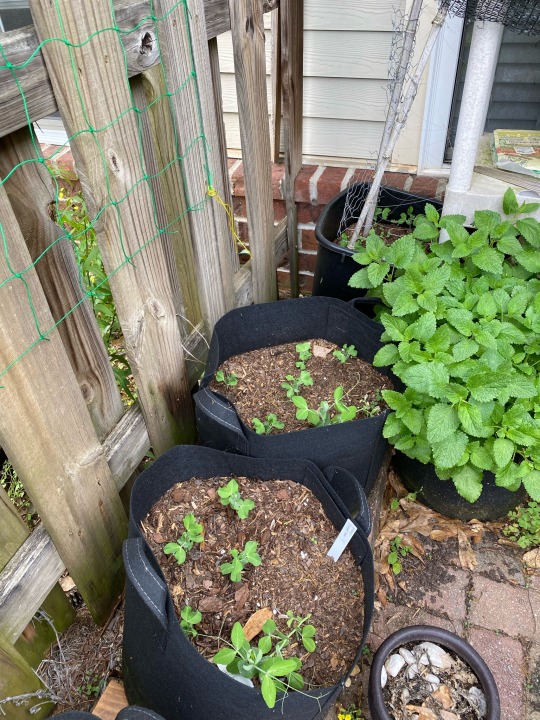
So many peas coming in!!
#my plants#plantblr#gardening#garden#urban gardening#container gardening#container garden#peas#pea plants#snap peas#sugar snap peas#snap pea plant#snap pea#lemon balm#urban agriculture#urban farming#container farm#container farming#farmcore#plantcore#food gardening#patio garden
4 notes
·
View notes
Text
Started the "Black Agricultural Solutions to Food Apartheid" course on Coursera today. It's completely free and I would highly recommend! Particularly if you are interested in urban agriculture and food justice.
I'll probably make a more in depth post on what the course entails + a link to it in the future.
2 notes
·
View notes
Text
In a conversation with Civil Eats, lead author Jason Hawes, a Ph.D. student at the University of Michigan, said this his team compiled “the largest data set that we know of” on urban farming. It included 73 urban farms, community gardens, and individual garden sites in Europe and the United States. At each of those sites, the research team worked with farmers and gardeners to collect data on the infrastructure, daily supplies used, irrigation, harvest amounts, and social goods. That data was then used to calculate the carbon emissions embodied in the production of food at each site and those emissions were compared to carbon emissions of the same foods produced at “conventional” farms. Overall, they found greenhouse gas emissions were six times higher at the urban sites—and that’s the conclusion the study led with. But not only is 73 a tiny number compared to the data that exists on conventional production agriculture, said Omanjana Goswami, an interdisciplinary scientist at the Union of Concerned Scientists (UCS), but lumping community gardens in with urban farms set up for commercial production and then comparing that to a rural system that has been highly tuned and financed for commercial production for centuries doesn’t make sense. “It’s almost like comparing apples to oranges,” she said. “The community garden is not set up to maximize production.” In fact, the sample set was heavily tilted toward community and individual gardens and away from urban farms. In New York City, for example, the only U.S. city represented, seven community gardens run by AmeriCorps were included. Brooklyn Grange’s massive rooftop farms—which on a few acres produce more than 100,000 pounds of produce for markets, wholesale buyers, CSAs, and the city’s largest convention center each year—were not. And what the study found was that when the small group of urban farms were disaggregated from the gardens, those farms were “statistically indistinguishable from conventional farms” on emissions. Aside from one high-emission outlier, the urban farms were carbon-competitive.
182 notes
·
View notes
Text

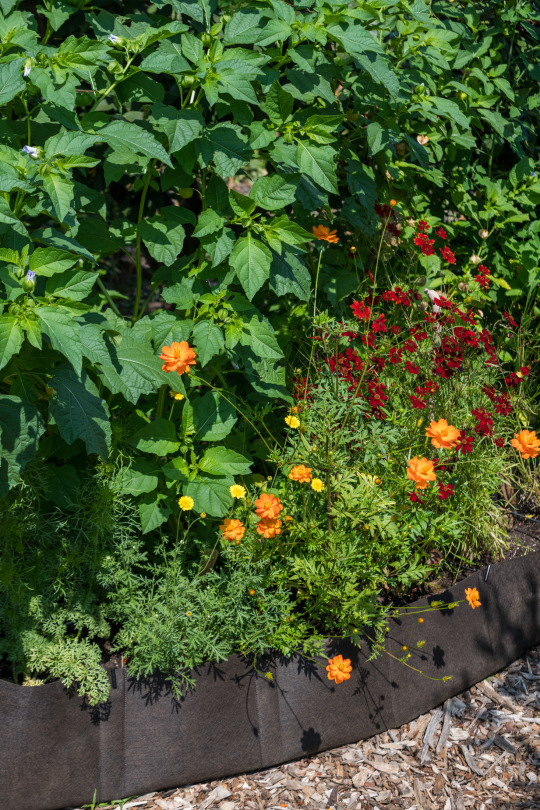
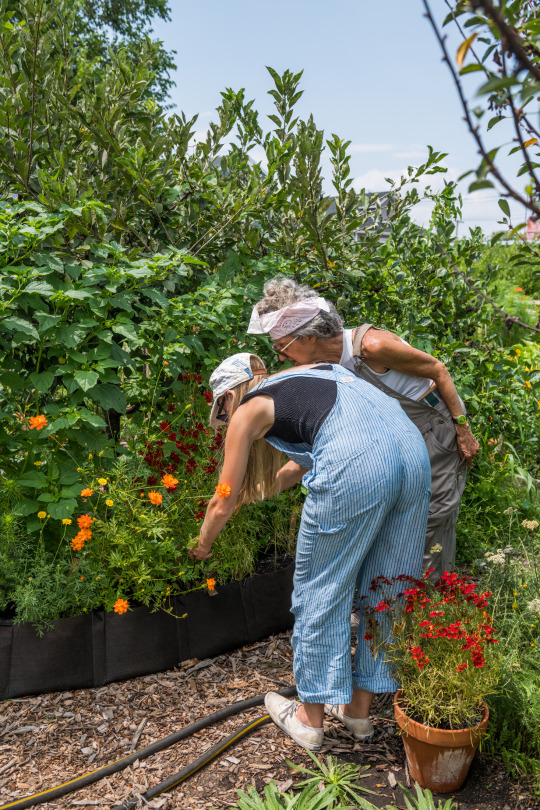
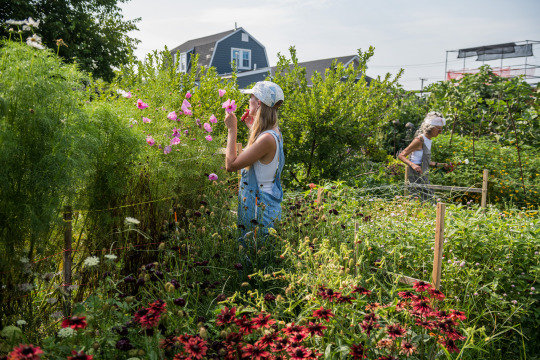




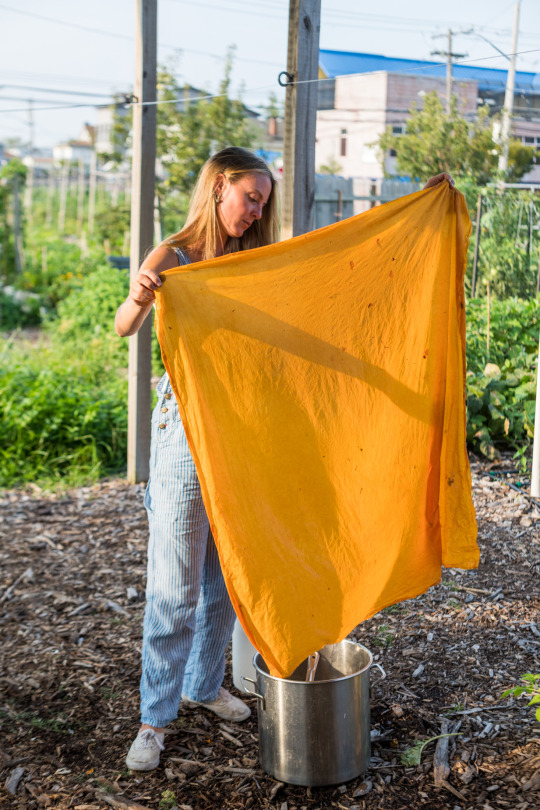

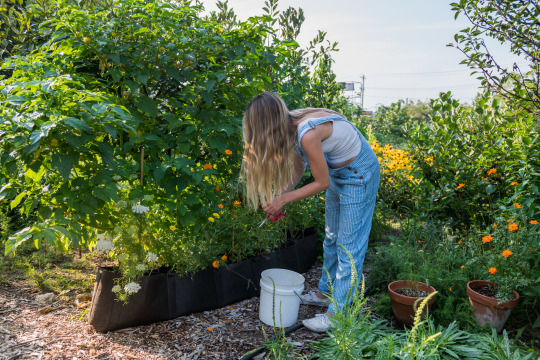
New Work for BACSAC Paris, France, featuring Dye Artist Madeleine Provost and bacsac's linear garden.
On the bacsac journal https://bacsac.com/journal/madeleine-provost/
3 notes
·
View notes
Text
Benefits of Vertical Farming: Efficiency, Conservation, and Quality
Vertical farming is a revolutionary approach to agriculture that combines modern technology with sustainable practices. It allows crops to be grown in vertical layers, making it highly efficient and suitable for urban areas where space is limited. Let’s dive deeper into this innovative farming technique, its methods, benefits, and the potential it holds for the future of food production. What is…

View On WordPress
#aeroponics#Agriculture Innovation#agriculture technology#aquaponics#city farming#controlled environment agriculture#eco-friendly farming#farming in limited space#Future Of Farming#green farming methods#high-yield farming#hydroponics#indoor farming#innovative farming techniques#LED farming#low-cost farming#modern agriculture#resource-efficient farming#rooftop farming#small space farming#smart agriculture methods#Smart Farming#soil-less farming#Sustainable Farming#sustainable urban farming#urban agriculture#urban farming#urban food production#Vertical Farming#vertical farming benefits
1 note
·
View note
Text
HUMAN FORM (EXERCISE 3 DRAFT 2) Imagining what the Human Form would be 80 years in the future
Food Food will be personalized through smart “nutrition pods” in homes, which analyze health data and create meal capsules using nutrient-dense algae, lab-grown proteins, and tailored micronutrients. 3D food printers will produce dishes based on dietary needs, reducing food waste. Urban rooftop farms and biomes will produce seasonal vegetables and herbs, allowing for hyper-local and fresh food without the need for long-distance shipping.
Water Communities will operate on closed-loop water systems, capturing, purifying, and recycling all water within each district. Buildings will feature ���dew collectors” that harvest water from the air, supplementing traditional sources. Smart sensors will analyze water quality and suggest conservation tips through community apps, ensuring every drop is used efficiently and safely.
Housing Homes will be built from regenerative materials that naturally absorb carbon dioxide. Living walls and roofs will support biodiversity by housing pollinator plants and providing nesting spaces. Community living spaces will be modular and transformable, adapting to residents’ needs over time and minimizing waste in construction. Neighborhoods will include shared gardens and social spaces that foster a sense of belonging.
Education Education will be globally accessible through immersive virtual classrooms and AI mentors that adapt to each student’s learning style. Learning will emphasize empathy, critical thinking, and collaboration with other cultures, creating a well-rounded, globally-aware population. Students will have experiential learning options like virtual field trips to historical events and hands-on labs in sciences, arts, and engineering.
Healthcare Healthcare will be deeply personalized, with AI continuously monitoring health through implanted or wearable micro-devices. Homes will have wellness capsules for preventive care, where individuals can track vitals, administer diagnostics, and even dispense treatments for minor issues. Gene therapies and nano-medicine will target diseases before symptoms appear, while mental health AI will provide ongoing support for emotional well-being.
Social Equity A focus on equity will ensure universal access to resources, with AI tools identifying and addressing systemic disparities in real-time. Community resource centers will provide free access to essential services, from legal aid to education. Basic income and shared ownership models will empower people to lead fulfilling lives without financial strain, ensuring a high quality of life for everyone.
Gender Equality Gender-neutral policies will govern workplaces, education, and healthcare, where systems automatically adapt to prevent discrimination and ensure equal access. Public life will embrace all gender identities, with AI-driven bias detection in policy-making, hiring, and healthcare to create a supportive, equitable environment.
Work & Income Work will focus on societal and environmental impact, with people choosing meaningful projects aligned with their values and talents. Automation will handle routine tasks, and flexible, short-term contracts will allow individuals to work on various projects without traditional career limitations. Basic income will provide security, and jobs will focus on creative and intellectual growth.
Energy / Electricity Energy sources will be entirely renewable, drawing from an interconnected global grid that relies on solar satellites, fusion power, and advanced wind and tidal systems. Every building will generate some power, whether through solar windows, kinetic floors, or wind-capturing facades. AI-managed grids will balance supply and demand globally, ensuring clean, constant power for all.
Peace & Justice Justice will focus on proactive solutions, with AI mediators analyzing and preventing conflicts before they escalate. Legal decisions will be guided by AI to eliminate bias, with a focus on rehabilitation and community repair. Peace will be maintained through citizen-driven councils and data-informed governance, ensuring justice that serves both individuals and society.
Transportation Transportation will be rapid, silent, and eco-friendly, with electric air taxis, maglev trains, and autonomous pods that communicate to optimize routes and reduce traffic. Walkways, bike paths, and green public transit will be woven into city layouts, reducing the need for private vehicles and encouraging low-carbon travel options.
Political Voice Blockchain voting will make democratic processes secure, with real-time community polling allowing citizens to weigh in on local and global decisions continuously. Digital transparency will hold leaders accountable, and citizens will participate in policy discussions via interactive forums, creating a fluid, engaged democracy.
Air Pollution Green technology like air-purifying trees and advanced filtration towers will neutralize urban pollutants. Smart pollution-monitoring systems will detect and address air quality issues in real-time. All vehicles and factories will run on clean energy, making urban air as pure as natural reserves.
Noise Pollution Cities will be designed to minimize noise, with sound-absorbing materials in streets, buildings, and transportation. Noise-reduction sensors will monitor and adjust sound levels in real-time, allowing for dynamic control of city noise. Nature corridors and quiet zones will provide spaces of calm within busy cities.
Non-Human Life Urban planning will prioritize habitats for non-human species, with green corridors, sky gardens, and biodiverse public spaces. AI-driven conservation initiatives will protect local ecosystems, monitor animal populations, and balance human activity with the needs of wildlife, fostering cohabitation.
Chemical Pollution Production processes will rely on sustainable, non-toxic materials, and manufacturing facilities will be carbon-neutral. Specialized filtration systems in factories will remove pollutants from water and air, while decentralized recycling will ensure efficient, eco-friendly waste management. Policies will enforce “green chemistry” standards, replacing harmful chemicals with biodegradable options.
Water Bodies & Supply Water sources will be safeguarded with advanced filtration and AI-monitored purity systems. Large-scale desalination plants, powered by renewable energy, will make ocean water a primary source of drinking water. Floating wetlands and bioengineered plants will support marine biodiversity and maintain water ecosystems' health.
Waste Management Waste will be a thing of the past as a circular economy takes hold. AI-powered sorting systems will redirect waste materials to recycling, composting, or repurposing channels, creating a closed-loop system. Biodegradable packaging and products will eliminate plastic waste, and waste-to-energy systems will provide additional renewable energy sources.
Land Use, Streets & Public Spaces Public spaces will be vibrant, with urban parks, walkable pathways, and shared green areas. Streets will prioritize pedestrian and cyclist accessibility, reducing car dependency. Public squares will host events, cultural activities, and community markets, creating hubs of social and economic engagement within neighborhoods.
Ocean Pollution Autonomous clean-up drones will patrol and cleanse oceans, capturing plastic and pollutants. Coral and marine life restoration projects will rebuild biodiversity in damaged areas, while biodegradable materials will prevent future pollution. Global cooperation will enforce ocean protection zones, fostering healthy marine ecosystems.
Effects of Climate Change Cities will adapt to climate extremes with buildings designed to withstand storms, floods, and extreme heat. Urban forests, wetlands, and green roofs will help regulate temperature and manage water flow. Reforestation and carbon capture technology will mitigate CO2 emissions, while predictive AI will help prepare for natural disasters.
Urban Agriculture & Greenification Cities will integrate agriculture into every available space, from rooftop farms and vertical gardens to community plots. Bioengineered plants will improve air quality and reduce urban temperatures, while automated irrigation systems will optimize water use. Green spaces will create a cooler, more livable environment for all.
Gender & Sexuality Gender inclusivity will be ingrained in every institution, with healthcare, education, and public spaces respecting and supporting all identities. Inclusive laws and policies will ensure that everyone can express themselves authentically without societal restrictions, creating a world of acceptance.
Diversity & Inclusion AI will ensure representation across all sectors, proactively identifying and addressing any bias or inequality. Policies will promote equal opportunity, and educational institutions will prioritize cultural, ethnic, and neurodiverse awareness, fostering communities that celebrate all identities.
Accessibility Universal design will make every environment accessible, with real-time AI assistance guiding individuals with disabilities. Public spaces, transportation, and technology will prioritize accessibility, using innovations like automated wayfinding, speech-to-text devices, and sensory-friendly environments.
Sustainability Sustainability will be a core tenet of all systems, with regenerative practices embedded in production, architecture, and daily life. Circular economy principles will guide product design, and global collaboration will drive environmental protection, creating a society that flourishes alongside the planet.
#Future of Humanity#Imagining the Future#80 Years from Now#Sustainable Future#Urban Utopia#Green Technology#Future Society#Eco-Friendly Living#Climate Adaptation#Future of Food#Renewable Energy#Urban Agriculture#AI & Society#Environmental Justice#Circular Economy#Gender Equality Future#Inclusivity in the Future#Clean Cities#Accessible Design#Smart Cities#Futuristic Housing#Biotechnology in Health#Equitable Future
0 notes
Text
I need to test my soil. I had no idea.
a publisher reached out to me about doing a foraging book and I just like
no one wants that book i'd write, it would just be an entire book about all the different land use histories of urban spaces and why they're full of heavy metals. the plants I *want* to write and draw about would practically be a footnote compared to the worried-auntie-warnings

i insisted on including lead in the gardening book because I gotta
3K notes
·
View notes
Text
1 note
·
View note
Text
There is less accessibility to fresh fruits and vegetables in dense cities because how far fresh produce must travel from farm to supermarket to table.
To fix this 800 million people across the world, is practicing urban agriculture.
0 notes